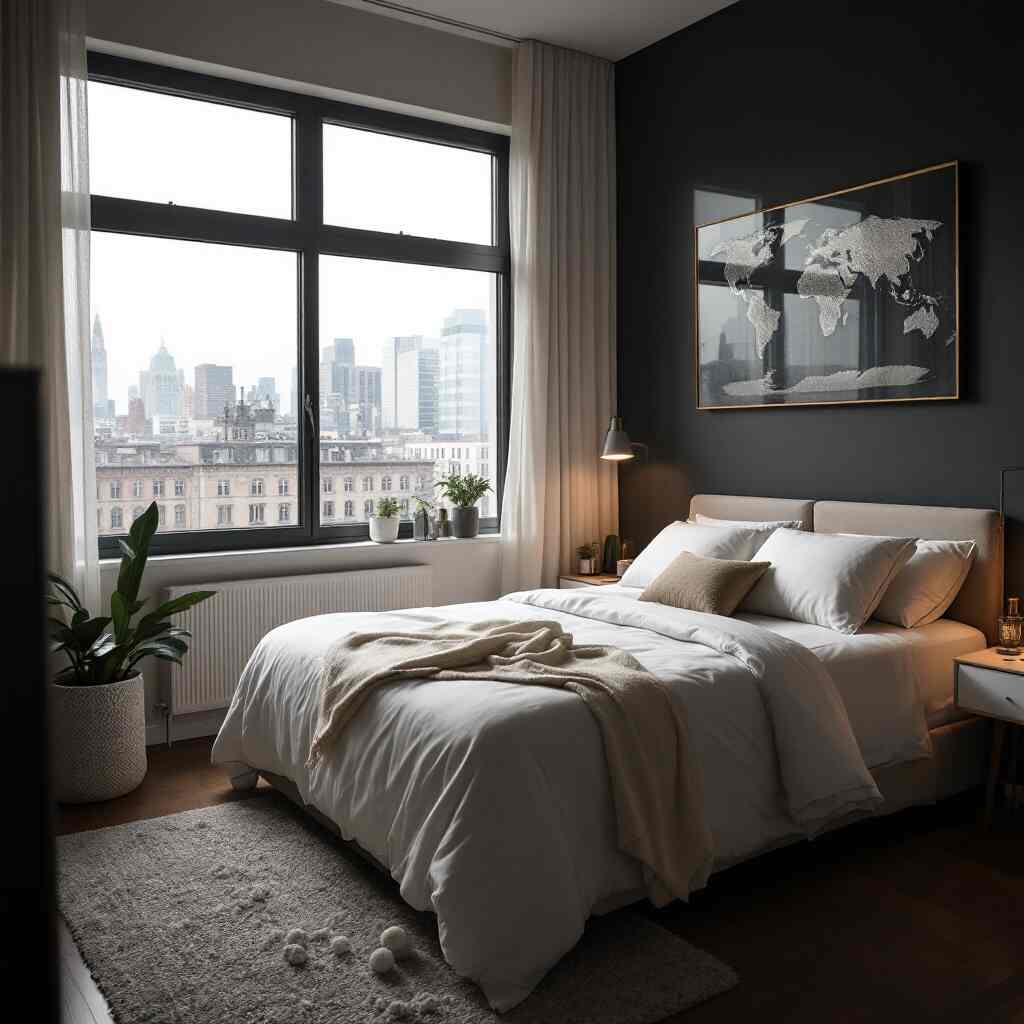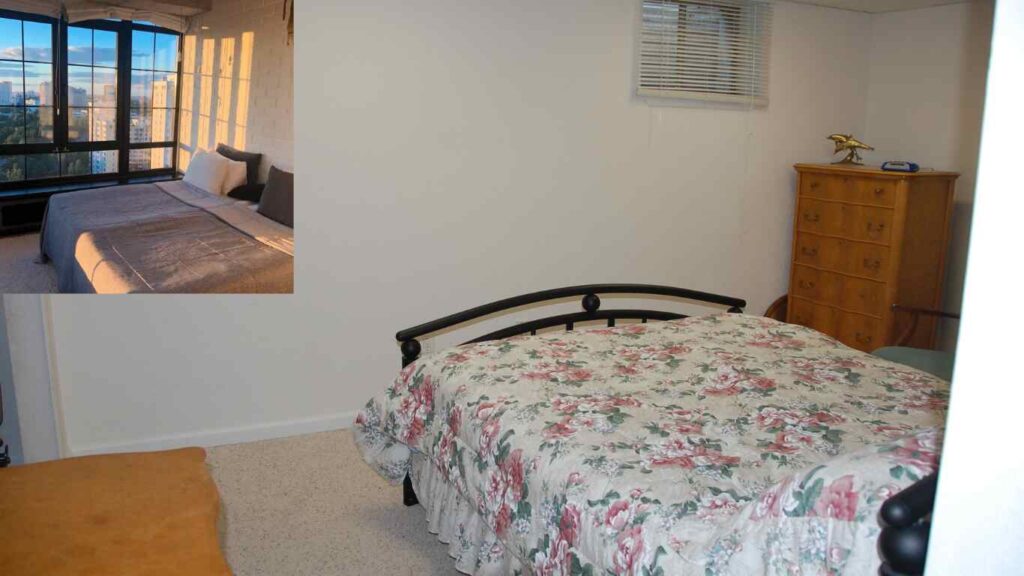Every square foot counts when designing a home. But what if you are dealing with a non-conforming bedroom? These spaces, although useful, often don’t meet the legal definition of a bedroom and can feel cramped, awkward or tricky to design. Fear not! Non-standard bedrooms can have a very airless and unfriendly appearance; however, they can easily be made into the most functional space with the right tips and tricks.
What Is a Non-Conforming Bedroom?

Before jumping to the solutions, we need to know what we’re actually facing. What is a non-conforming bedroom? A non-conforming bedroom is a room that doesn’t legally qualify to be a bedroom. This may sound technical but many owners have spaces which they use as sleeping quarters which last in this category.
Frequent Problems with Non-Compliant Bedrooms
There are many reasons why a bedroom may be non-conforming, including:
No means of egress Most building codes require a window or door that offers an escape route in an emergency. A non-conforming room does not have this feature.
- Technical Issues: Roofs in some of the rooms can be sloping or high, or not reach the minimum height.
- Room Requirements: A bedroom has to meet a minimum square footage to be considered legal bedroom.
- No Temperature Control: If the room isn’t hooked into the home’s main heating and cooling system, it may not count as a proper bedroom.
Why You Should Optimize These Spaces
Even if a non-conforming bedroom doesn’t meet legal standards, it’s still in your home. Whether it’s an attic room, a converted basement, a spare guest space, maximizing the potential is important for comfort and aesthetics. By tweaking the layout, furniture and design, you can create a room that not only works, but wows, too.
Furniture and Strategic Layout

How a room feels in terms of space comes down to its layout and furniture. In the case of a non-conforming bedroom, every square inch matters. Here’s how to make smart decisions that free up your space.
You may also read (how to create-a vaporwave room.)
Embrace a Minimalist Approach
Less is definitely more when space is tight. An uncluttered, minimalist design creates a sense of freshness or openness. Keep the room simple without an overabundance of furniture or decorations.
- Opt for furniture with straight lines and straightforward designs.
- Keep personal items hidden with storage solutions.
- Choose a neutral color scheme to keep it feeling calm.
Invest in Multi-Functional Furniture
In a tiny space, multi-purpose furniture is a godsend. Here are some ideas:
- Storage Beds: These beds come with shelves, drawers or lift-up storage where needed, thus putting bulky dressers out of use.
- Folding Desks: A folding or wall-mounted desk is the best option when trying to save space when not in use.
- Ottomans with Storage: Can serve as seating, as well as a place for storage.
Strategic Furniture Placement
Furniture placement is just as important as the furniture. Here are some placement strategies to help you maximize your non-conforming bedroom:
- Don’t Block Windows: Natural light is the best thing you can bring into a room to make it feel bigger.
- Keep Pathways Clear: Move furniture around to leave plenty of room for movement. This allows the space to not feel cramped.
- Float Furniture: Putting your furniture somewhat away from the walls sometimes helps simulate more space.
Use Built-In Storage
Custom-built furniture is one of the best ways to maximize every square inch in your space. Closet organizers, built-in shelves and drawers or even a Murphy bed can utilize vertical space and cut down on mess on the floor.
Scale and Proportion Matter
Pick furniture that’s the right scale for the room. Oversized pieces can be overwhelming in a small space, so choose smaller-scale beds, desks and chairs that allow for plenty of breathing room.
Maximizing Light and Color
Light and color can enhance awareness of space. Light, open, and airy designs are the secret ingredient to a non-conforming bedroom feeling bigger.
- Light Colors Do Magical Wonders As Per Color Psychology
- Lighter hues reflect light better, which can help a room feel larger and more open. For walls, consider:
- Whites: the old was old takes a new take.
- Light Grays: A contemporary neutral that offers elegance.
- Pale blues or greens: These colors can give a calming and open feel.
Use accent colors to add depth without overwhelming the room. A soft pastel throw pillow, for instance, or a single piece of bold wall art can provide personality without overwhelming the space.
- Maximize Natural Light
- Natural light does wonders for making a room feel more open. To maximize it:
- Opt for sheer curtains or blinds that let light stream in.
- Stay away from heavy drapes or dark window coverings that block light.
Use strategic artificial lighting
Layered lighting is key in small spaces. Combine:
- Ambient Lighting: Ceiling fixture or recessed light for overall illumination.
- Task Lighting: Desk lamps or bedside lamps for focused, directed activities
- Accent Lighting: LED strips or small spotlights to accentuate shelves or artwork.
Mirrors: The Wonders of Reflection
Mirrors are a designer’s secret weapon for the illusion of space. Position a large mirror directly across from a window to reflect natural light in or use mirrored furniture to send light bouncing around the room.
Utilizing Vertical Space
The statement “look up” refers to when floor space is limited! Finding vertical space to use can help make your non-conforming bedroom feel bigger.
Floating Shelves for Storage
Hang floating shelves on the walls to hold books, decor or other necessities. It adds personality to the room and keeps things off the floor.
Tall, Narrow Storage Units
Overhead storage units draw the eye upward — both to the ceiling and into the illusion of height. Search for tall bookcases, wardrobes or storage cabinets.
Large Wall Art
A single large piece of wall art can fill a wall with a bold statement while leaving the rest of the room uncluttered. Select something that goes with the room’s color palette.
Taller Curtains or Headboards
Full-length curtains or tall headboards play up the height of the room. Even in a low-ceilinged room, this trick gives a feeling of height.
Creating Illusions of Space
Occasionally, it’s just about making space seem larger than it is.
Mirrors
We’ve talked about mirrors before, but the importance of them bears repeating. Consider:
Using mirrored closet doors.
- Hanging a large mirror above the bed or a focal wall.
- Choosing pieces like side tables or dressers that have mirrored finishes.
Wall Paneling and Textures
Use subtle wall paneling or textures to give depth and dimension. Vertical stripes, for instance, can give the illusion that a wall is taller, while horizontal stripes can widen a wall.
Decluttering Regularly
Clear surfaces of items that do not serve a purpose. A tidy room always seems bigger and more welcoming. Implement store baskets or bins for items.
Accessorizing Strategically
Accessories can provide personality to a room, but in a small space, less is more.
Choose Lightweight Textiles
Opt for thin fabrics for bedspreads and curtains. When heavy materials end up in a small room, it can feel stifling.
Add a Rug
A well-placed rug will define the space and ground the furniture placement. Choose a rug that isn’t too loud for the room’s color palette or scale.
Incorporate Greenery
A small potted plant or two can liven up the room and add some freshness and greenery, while not taking up too much room.
Conclusion
So even if your bedroom is a non-complying box, as long as you apply the right strategies, it’ll become a spacious, comfortable retreat. By thinking through smart layout decisions, using light and color to your advantage, and taking advantage of vertical space, you can make a small room feel airy, functional, and gorgeous. Now it’s your turn — give these tips a trial run and you’ll notice the difference. Got your own tips for making small spaces work? What do you think? Share in the comments below!
You may also read (unique bedroom art custom neon signs for your space.)

